Punta Ninfas, Patagonia – January 22, 2023
Welcome to Patagonia, a region encompassing the southernmost tip of South America, shared by Argentina and Chile, with the Andes Mountains as its dividing line. We were on the Argentine side known for its arid steppes, grasslands and deserts – and Magellan Penguins!
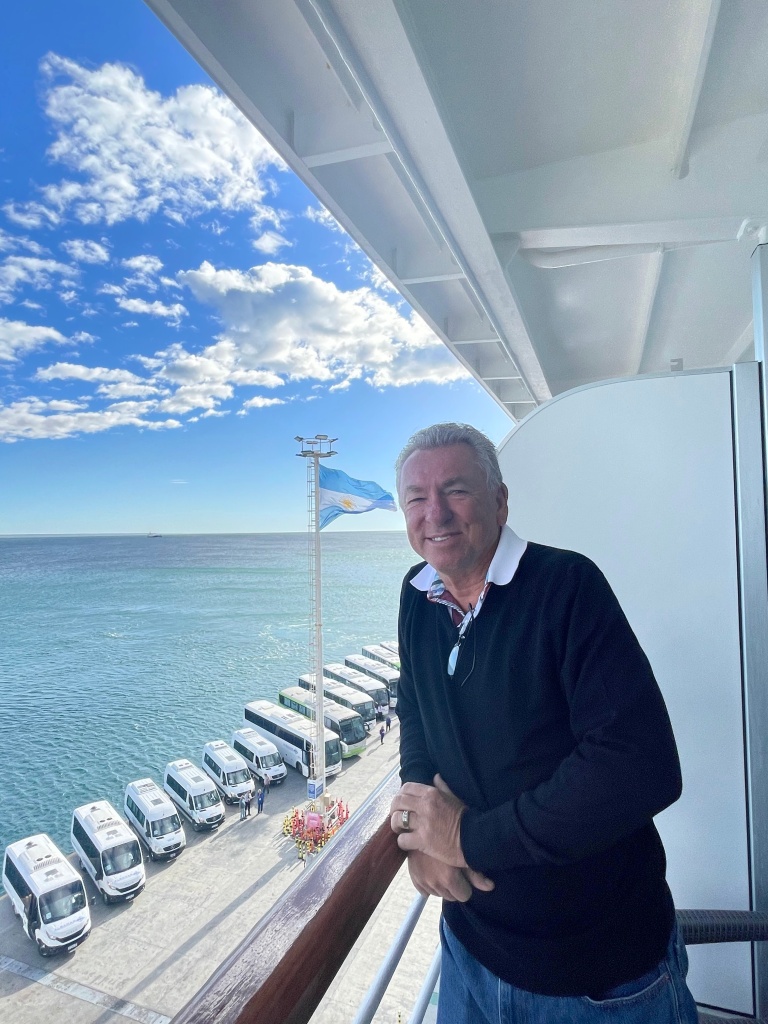
We’re quickly learning it’s always windy in Argentina. Check out that flag behind Ken.
We drove an hour-and-a-half each way on deeply rutted dirt roads through these grasslands and desert areas, past miles and miles of estancias. Almost all of the land in Patagonia is privately owned and used for estancias. Estancias, and the Gauchos that work them, are at the heart of Patagonian culture and lifestyle. They are ranches or farms normally used for rearing Merino sheep. Many cover vast areas of grassland. It’s a hard life – there is virtually no fresh water in all of Patagonia (you don’t have to drill deep to find water, but it is salt walt, good only for livestock, bathing and sewer), so all drinking water and fuel must be brought in, and each estancia is responsible for providing its own electricity. You need approximately 20,000 sheep to produce enough wool to support the estancia and its small workforce, which usually includes 3-5 full-time workers and several seasonal workers.
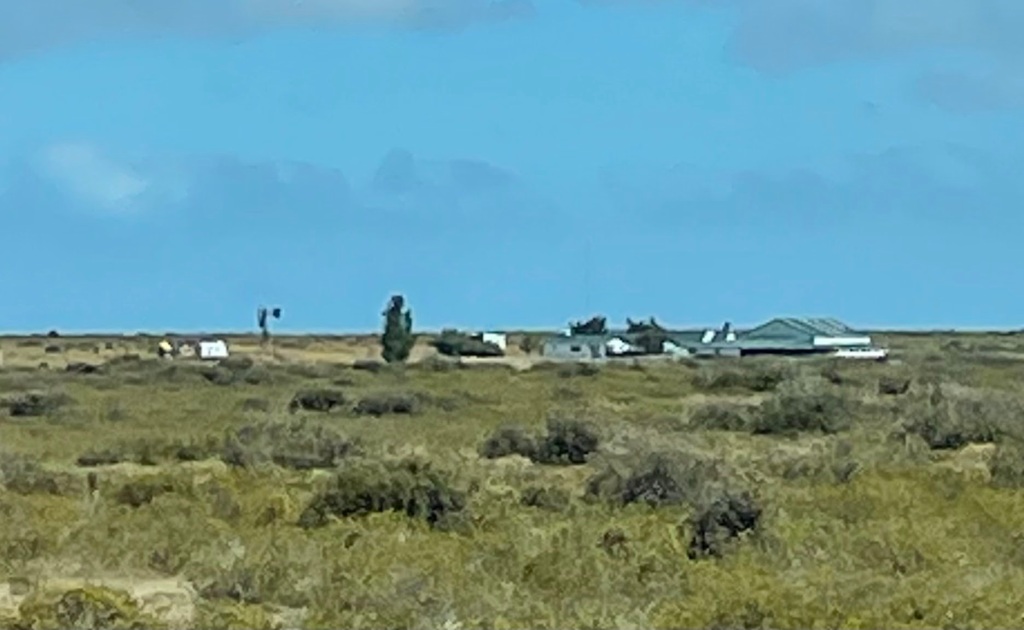
Along the way we passed a guanaco running through the grasslands. Guanacos are related to llamas, and like camels are able to store water in their bodies for long periods of time. They’re usually seen in herds, so our guide was very surprised to see this one out on its own.
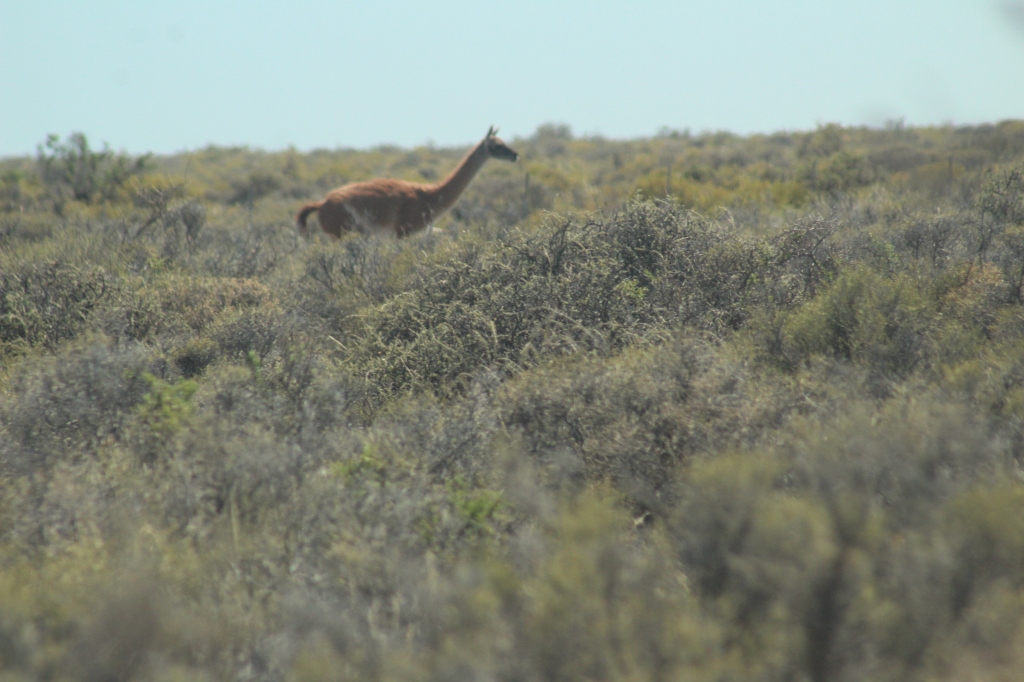
We finally arrived at Punta Ninfas (Nymphs Point) and its wonderful colony of Magellanic Penguins. Turns out not all penguins like the cold! This species of penguin is native to South America, and is named after the Spanish explorer, Ferdinand Magellan, who was the first to record their presence in 1520. They spend their summers along the coasts of Argentina, the Falklands and Chile, and when the weather turns cold they hit the water and head to Brazil. Ken says these are his kind of penguins!
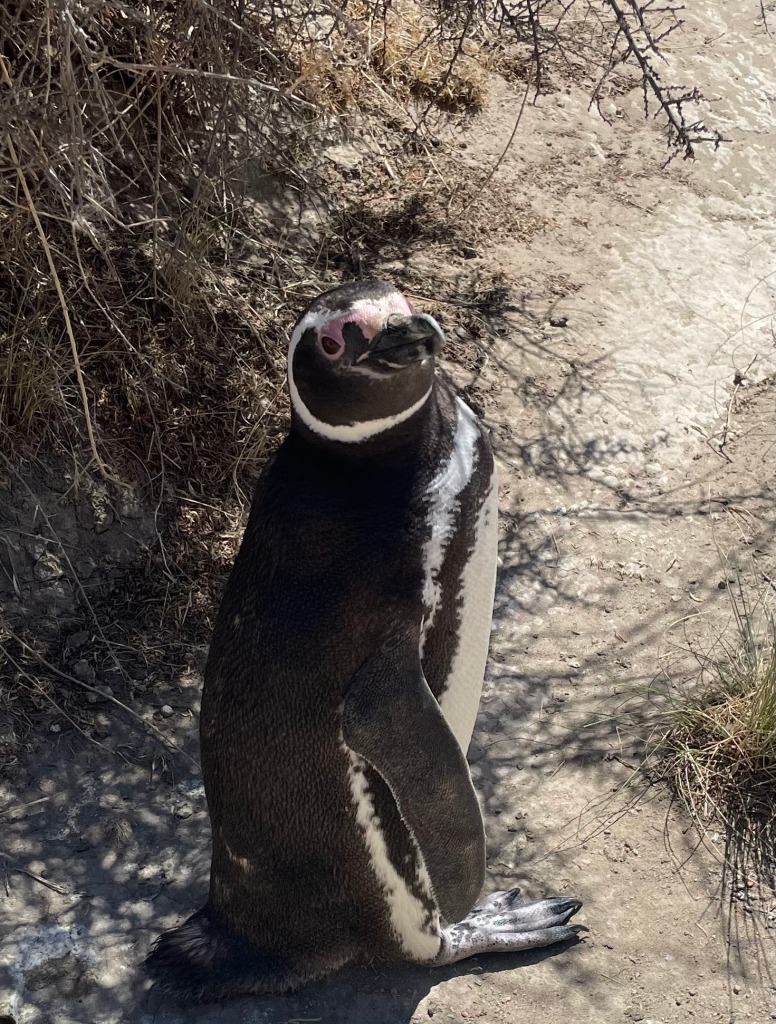
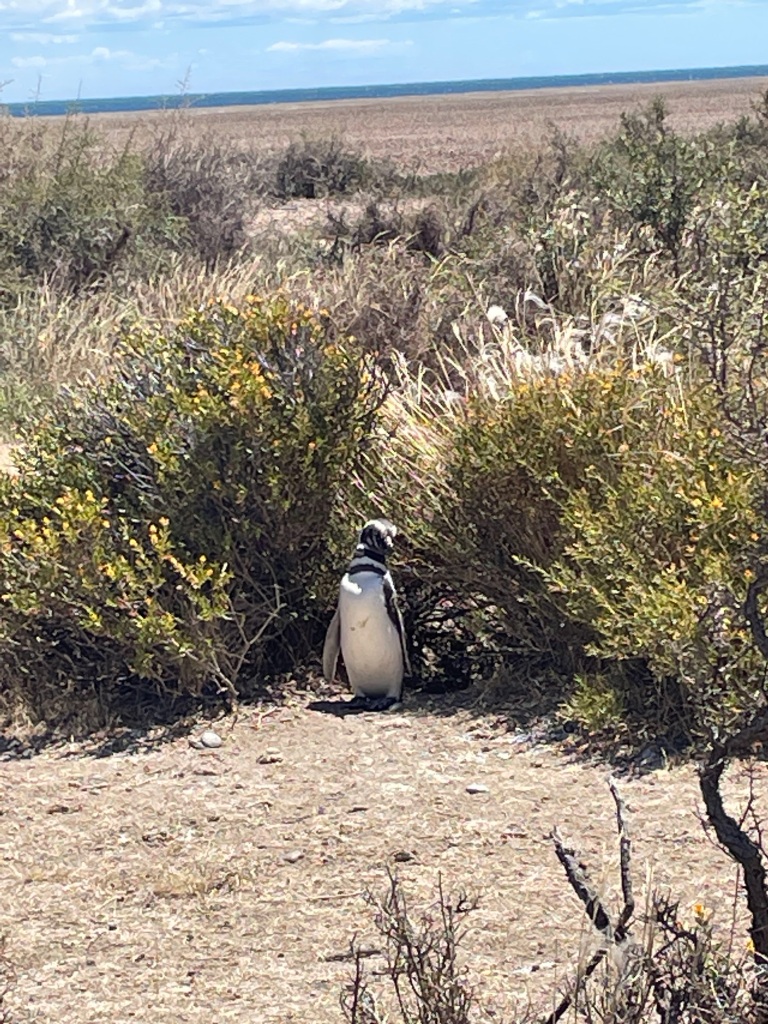
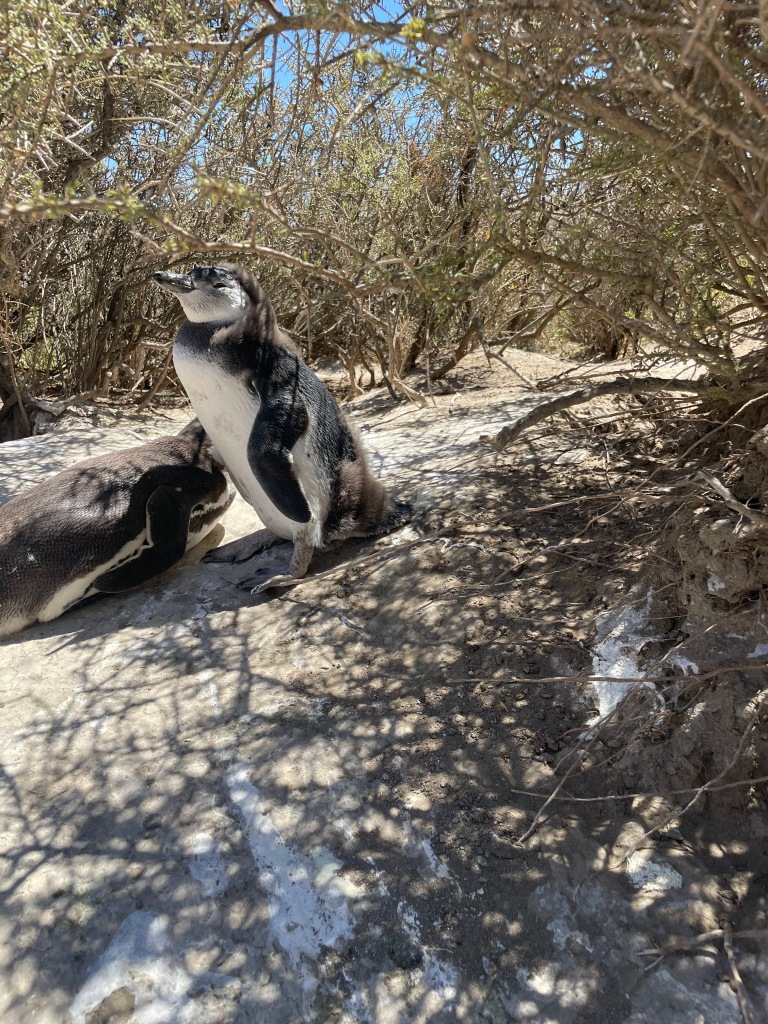
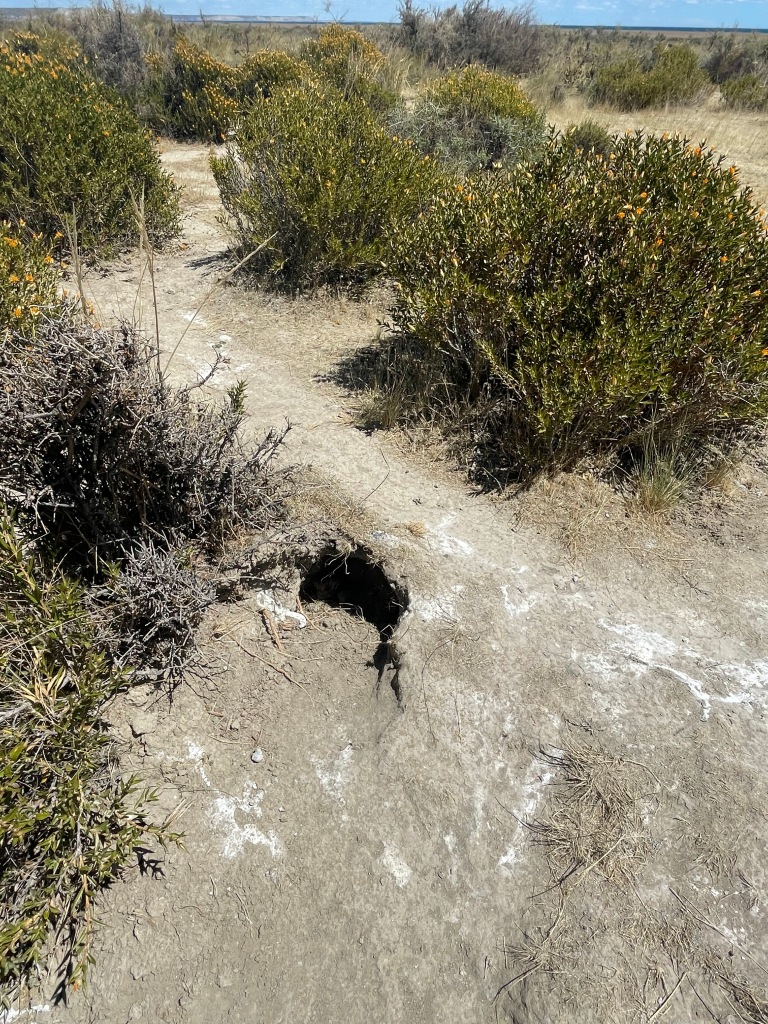
Magellanic penguins are very social and live in large colonies, sometimes containing as many as 200,000 birds, where they nest in burrows, under bushes. They are monogamous mates who share parenting duties. The female usually lays two eggs a season, which take 39-42 days to hatch. Both parents sit on the eggs, rotating out every two weeks or so. When the chicks hatch the parents take turns gathering food to feed them.
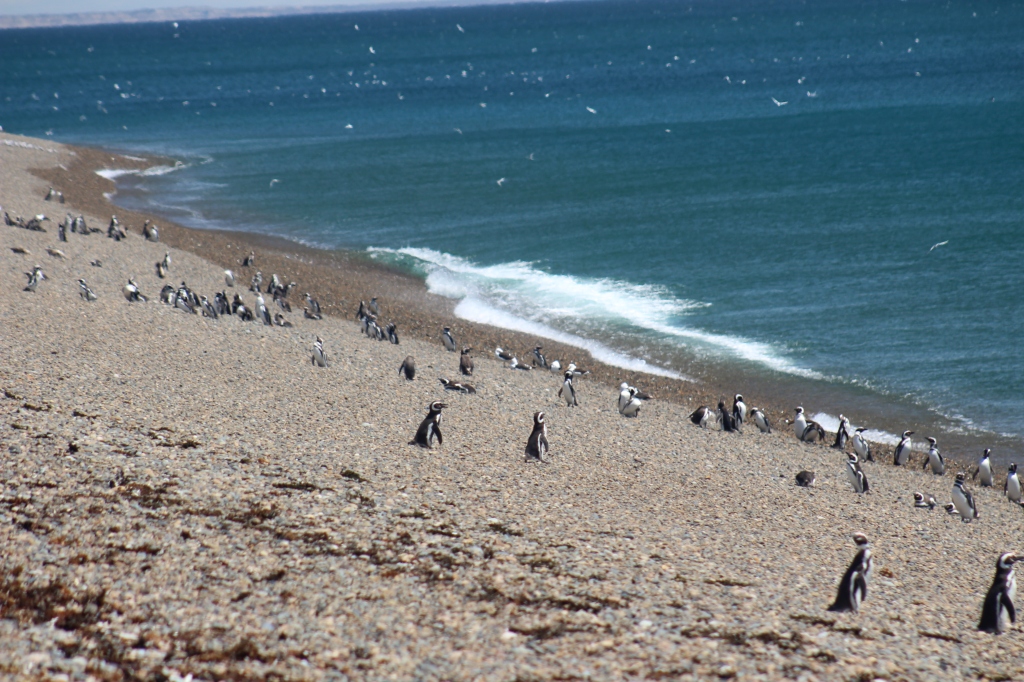
It’s a long walk for this colony to gather food. We are standing near their nest and they need to walk all the way to the blue ocean you see just below the sky behind us. Whew!

Baby penguins, like most birds, are born covered in soft downy fur, which they will lose after their first month or so. By the age of 60-70 days they are ready for their first swim.
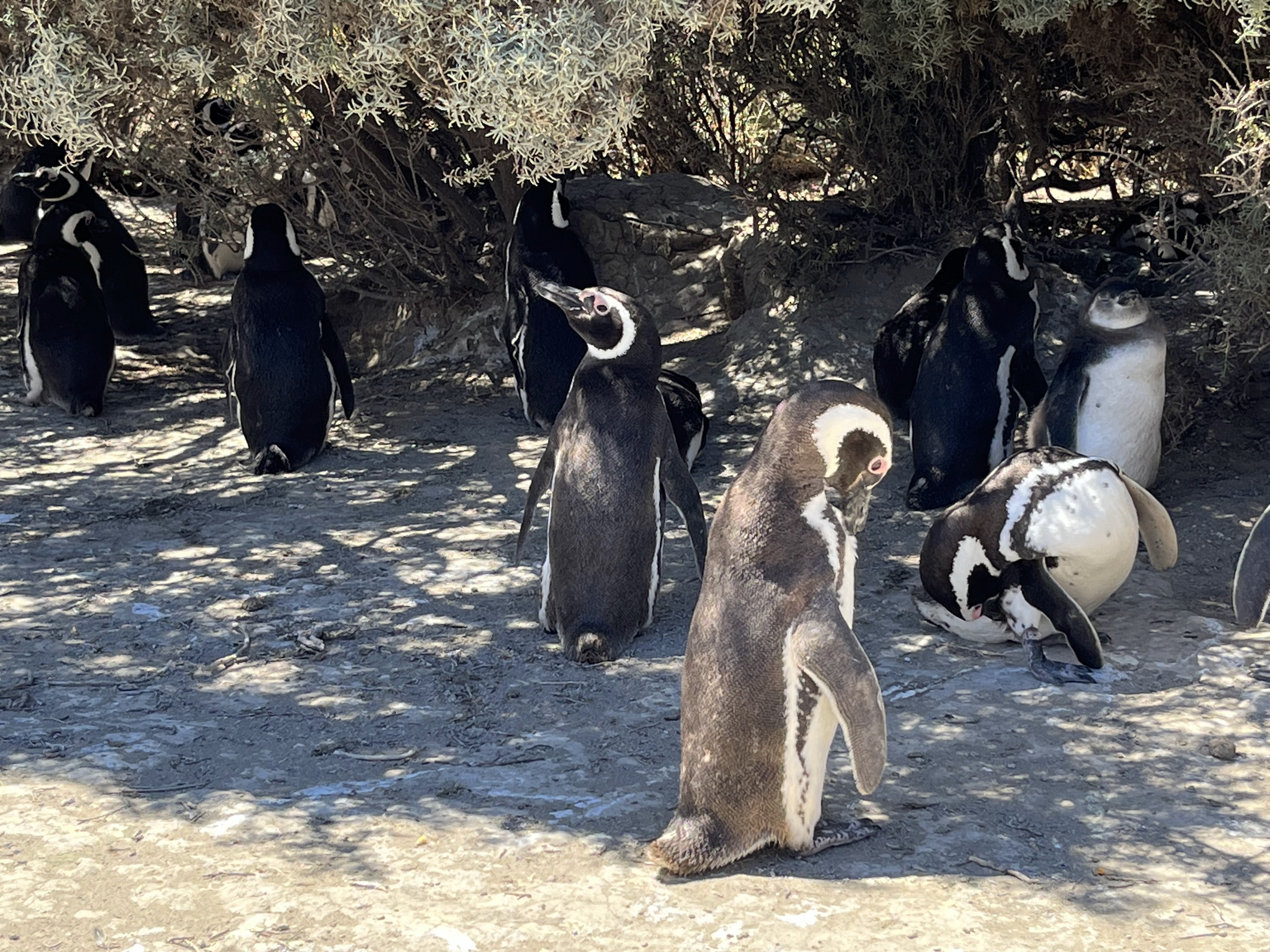

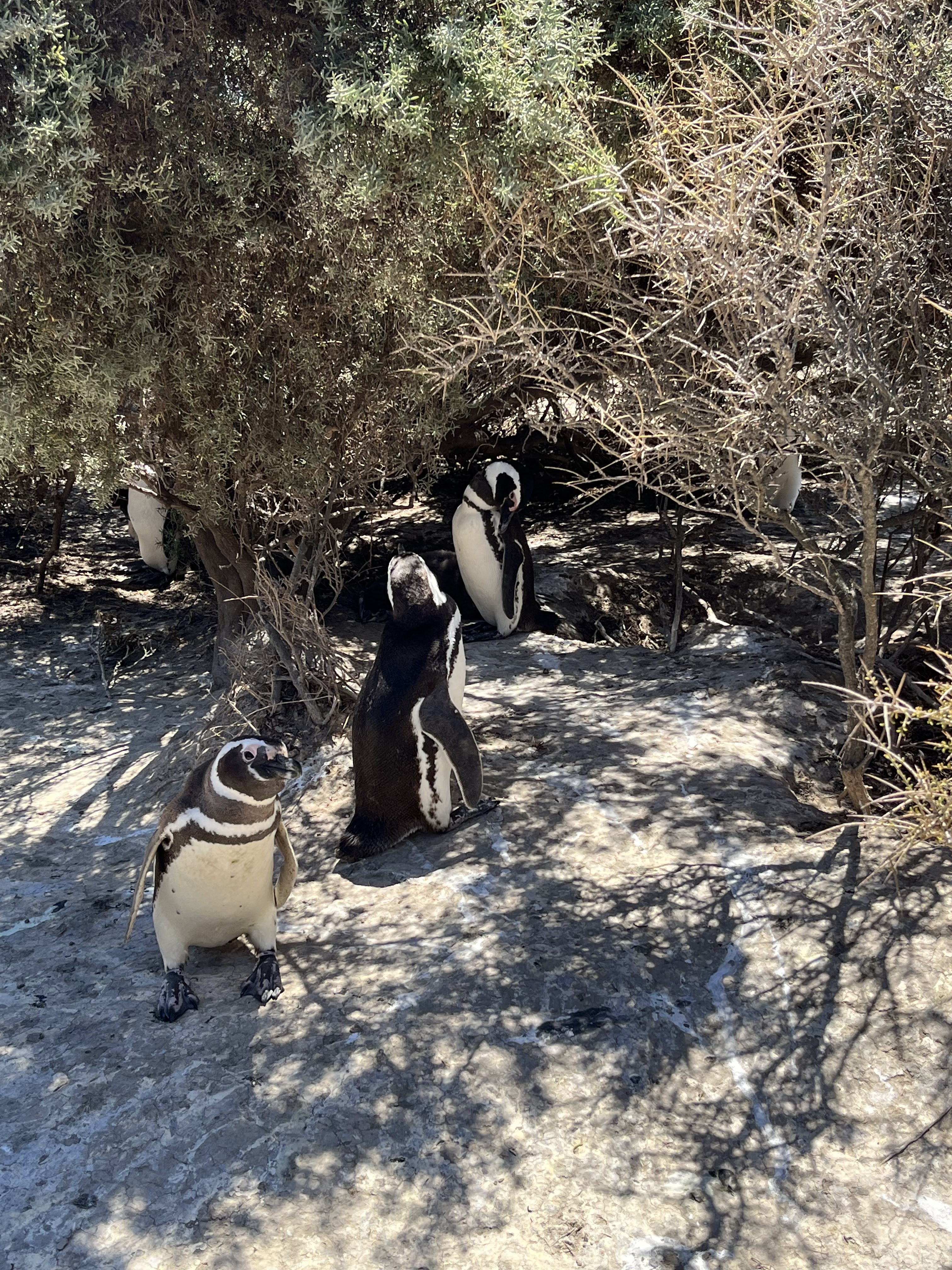
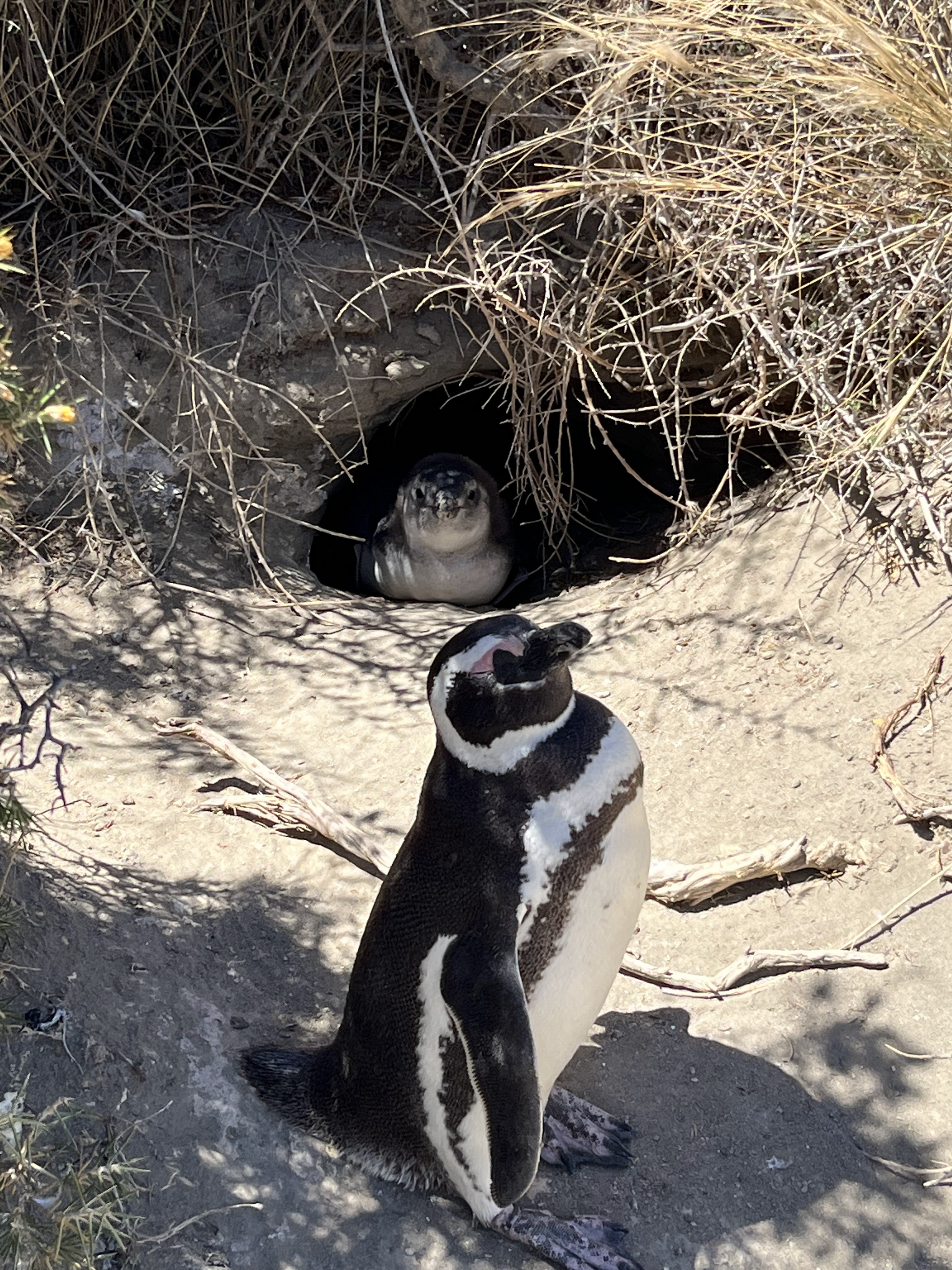
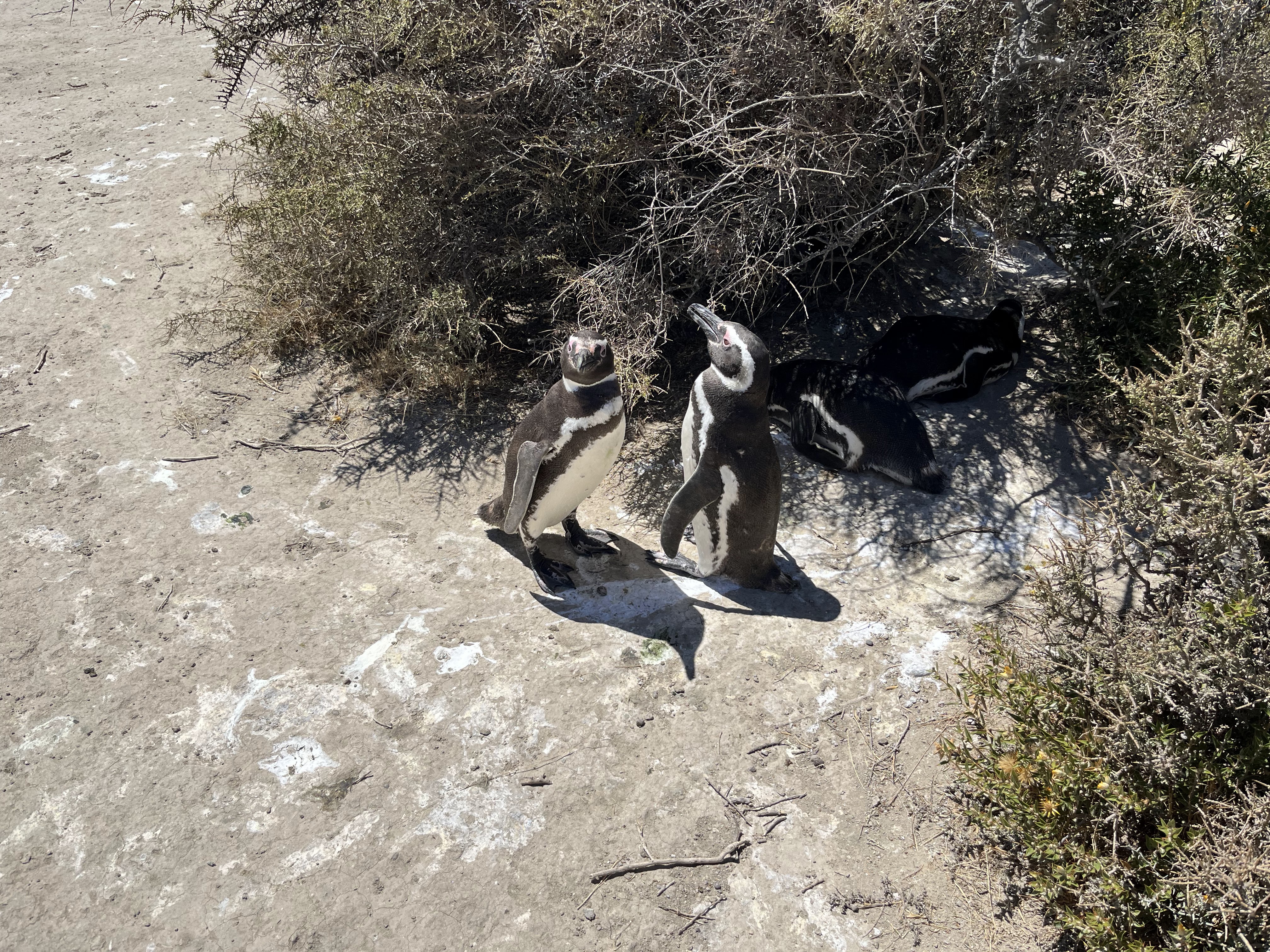

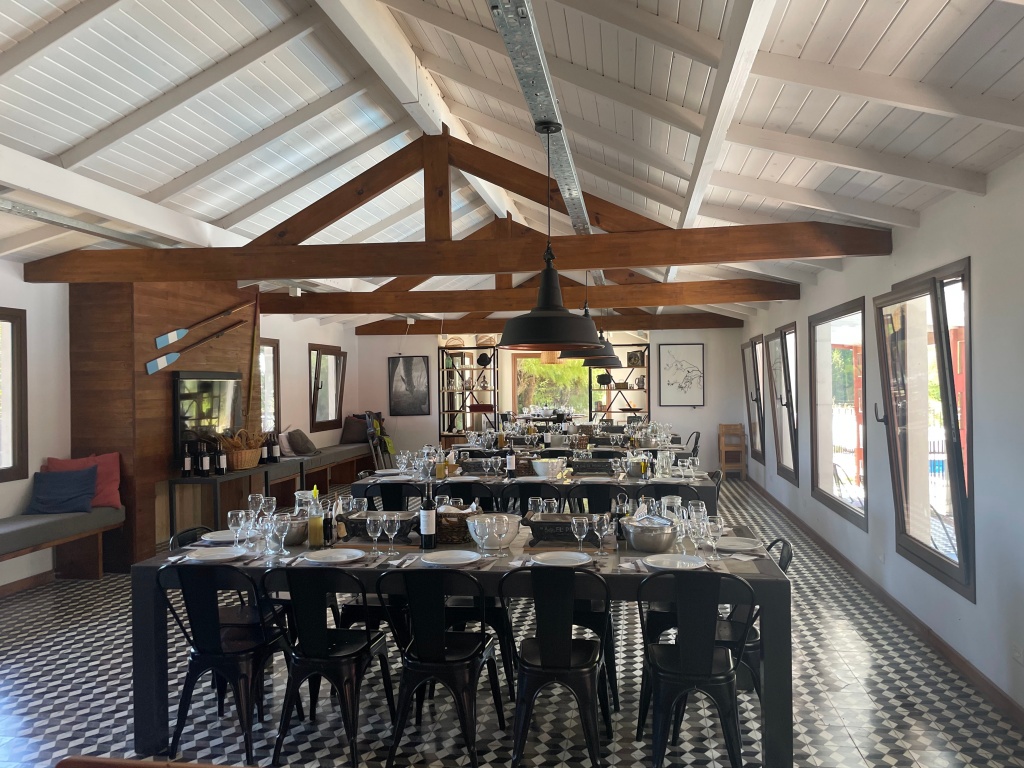
After our visit with the penguins we were served a traditional South American meal at El Pedral Lodge, a small estancia established by two Basque friends in 1923. The lamb for our meal was prepared on a spit over an open fire and the chorizo was grilled in an outdoor brick oven. So good!!

And Pam made a new friend who made her miss Sophie all the more!


You guys are inspiring us ! Have fun, be safe, and continue to journal.
Love,
Joe and Lynette Byrne
LikeLike